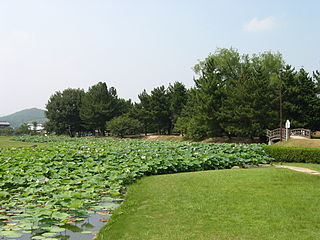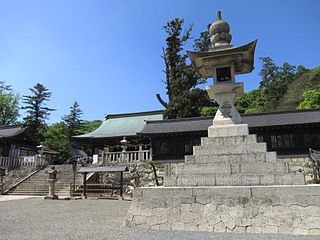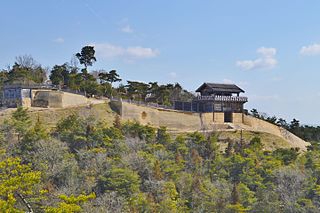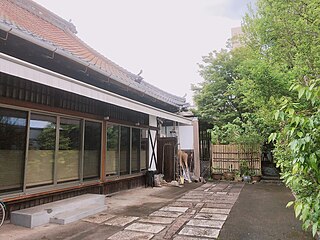24 Sights in Okayama, Japan (with Map and Images)
Legend
Welcome to your journey through the most beautiful sights in Okayama, Japan! Whether you want to discover the city's historical treasures or experience its modern highlights, you'll find everything your heart desires here. Be inspired by our selection and plan your unforgettable adventure in Okayama. Dive into the diversity of this fascinating city and discover everything it has to offer.
Sightseeing Tours in OkayamaOkayama Castle is a Japanese castle in the city of Okayama in Okayama Prefecture in Japan. The main tower was completed in 1597, destroyed in 1945 and replicated in concrete in 1966. Two of the watch towers survived the bombing of 1945 and are now listed by the national Agency for Cultural Affairs as Important Cultural Properties.
2. 最上稲荷山 妙教寺

Mogami Inari is a Nichiren Buddhist temple located in Kita-ku, Okayama City, Okayama Prefecture, Japan. The official name is Mogami Inariyama Myokyoji. Since it is located in the Takamatsu district of Kita-ku, Okayama City, it is also called Takamatsu Inari.
3. Kōraku Garden

Kōraku-en is a Japanese garden located in Okayama, Okayama Prefecture. It is one of the Three Great Gardens of Japan, along with Kenroku-en and Kairaku-en. Korakuen was built in 1700 by Ikeda Tsunamasa, lord of Okayama. The garden reached its modern form in 1863.
4. Kibitsuhiko Shrine
Kibitsuhiko Jinja (吉備津彦神社) is a Shinto shrine in the Ichinomiya neighborhood of the city of Okayama in Okayama Prefecture, Japan. It is the ichinomiya of former Bizen Province. The main festival of the shrine is held annually on the third weekend of October. Theshrine is also known in literature as the Asahi-no-miya (朝日の宮).
5. 高松城址公園

Takamatsu Castle of Bitchū Province was a Sengoku period Japanese castle located in what is today the Kayo neighborhood of Kita-ku, Okayama in Okayama Prefecture. The style of the castle was a hirajō with no stone walls, but only earthen walls. The castle was surrounded by marshes, which formed a natural moat. Its ruins have been protected by the central government as a National Historic Site since 1902.
6. 岡山芸術創造劇場 ハレノワ
Okayama Arts Theater is a cultural and artistic facility located in Omote-cho, Kita-ku, Okayama City, Okayama Prefecture. It is the only theater in the Chugoku and Shikoku regions with three theaters: large, medium, and small. The nickname based on the open call is Halenova.
7. Ki castle
Ki castle was an ancient kōgoishi type castle (also known as a Korean-style fortresses in Japan located in the city of Sōja, Okayama Prefecture, Japan. Its ruins have been protected as a National Historic Site since 1986. Portions of the castle were reconstructed in the early 2000s.
8. 安仁神社

Ani Shrine (安仁神社) is a Shinto shrine located in Okayama City, Japan. It is one of three governmental Shinto shrines dedicated to imperial ancestors. It is a Beppyo shrine, or a shrine that is particularly notable in a certain way with a significant history to it.
9. 啓運山盛隆寺
Joryuji is a temple of the Nichiren sect in Seno, Minami -ku, Okayama City, Okayama Prefecture. The mountain name is Keidan. Former Motoyama is Kominato Birth Temple. Ichiji Law. As for the towers, there are Anjoin, Joen -in, Zenpoin, Chopin -in, Kanjin -in Temple and Ichishinji Temple. In addition, Seno Sennen is said to be the Hokke of Senoo Seno because of the religion in the region.
10. 国清寺
Kokuseiji is a Rinzai sect Myoshinji temple located in Naka Ward, Okayama City, Okayama Prefecture. The mountain name is Banzai Mountain. The main deity is Shakyamuni Buddha. It is the family temple of the Ikeda clan, the ancestors of Terumasa and Toshitaka Ikeda of the Okayama domain.
11. 金光山 岡山寺
Okayama Temple is a Buddhist temple of the Tendai sect located in Kita-ku, Okayama City, Okayama Prefecture, Japan. The name of the mountain is Mt. Kinkozan. Amitabha, Thousand-handed Kannon, and Shakyamuni are the main Buddhas. Before the Middle Ages, it was located in the area of Okayama Joji (near the current Okayama Civic Hall).
12. Hayashibara Art Museum
The Hayashibara Museum of Art is an art museum owned by the Hayashibara Group, and located at 2-7-15 Marunouchi, Kita-ku, Okayama, Japan. It is on the site of a former guesthouse beside the inner moat of Okayama Castle. Its 6,832 square meter interior was designed by Kunio Maekawa.
13. Okayama Orient Museum
Okayama Orient Museum is a museum of Ancient Near Eastern, Roman provincial, Byzantine, Sassanian, and Islamic Art in Kita-ku, Okayama, Okayama Prefecture, Japan. As of 2007 there were some 4,852 items, including a winged Assyrian relief from the palace of Ashurnasirpal II in Nimrud, Mesopotamia, acquired to mark the institution's 25th anniversary.
14. 蔭涼寺
Inryō-ji is a Buddhist temple in Okayama City, Okayama Prefecture, Japan. It is also known as Inryo-ji, Inryou-ji, or Inryoji. It is a temple of the Myōshin-ji school of the Rinzai sect in Japanese Zen. The temple was founded in 1632 during the Edo period by Ikeda Tadakatsu.
15. 妙福寺
Myofukuji is a Nichiren sect temple located in Kiyokibashi, Kita Ward, Okayama City, Okayama Prefecture. Its mountain name is Eijizan. The former head temple is Daibonzan Myokenji (Shijo school), and it is affiliated with the Tenshi school.
16. 岡南新保駅
Okaminami Shinbo Station is a station (defunct) of the Okayama Rinko Railway that once existed in Shinbo, Okayama City, Okayama Prefecture (now Minami-ku). On December 30, 1984 (Showa 59), it was abandoned due to the abolition of the Okayama Rinko Railway Line. The home is still in place as of 2021 (Reiwa 3).
17. 柴岡山 光珍寺
Kochinji Temple is a temple of the Tendai sect located in Kita-ku, Okayama City, Okayama Prefecture, Japan. The name of the mountain is Shibaokayama. The honzon is Amitabha. It is the Bodhi Temple of the Ukita clan.
18. 蓮休寺
Renkyuji is a Nichiren sect temple located in Kamo, Kita-ku, Okayama City, Okayama Prefecture. Its mountain name is Hoi Mountain. The former head temple is Ishitōji in Mukō, Kyoto Prefecture, and it is affiliated with the Seishi school.
19. 亀山城
Kameyama Castle , also well known as Numa Castle, is the remains of a castle structure in Higashi-ku, Okayama Prefecture, Japan. Its ruins have been protected as an Okayama City Designated Historic Site.
20. 牟佐大塚古墳
Musa Ōtsuka Kofun (牟佐大塚古墳) is a Kofun period burial mound located in the Musa neighborhood of Kita-ku, Okayama, Okayama Prefecture, in the San'yō region of Japan. The tumulus was designated a National Historic Site of Japan in 1930.
21. 信城寺
Shinjoji Temple is a Nichiren Buddhist temple located in Niwase, Kita-ku, Okayama City, Okayama Prefecture, Japan. The name of the mountain is Mt. Hosho. The former main temple is the Ōmotoyama Nativity Temple (Minobumon-ryū) and the Shrine Dharma Circle (奠統会).
22. 尾上車山古墳
Onoe Kurumayama Kofun (尾上車山古墳) is a Kofun period burial mound located in the Onoe neighborhood of Kita-ku, Okayama, Okayama Prefecture, in the San'yō region of Japan. The tumulus was designated a National Historic Site of Japan in 1972. It is also called the "Girigiriyama Kofun" (ぎりぎり山古墳).
23. 津島遺跡

Tsushima Site is an archaeological site with the traces of a Yayoi period settlement, located in the Izumi neighborhood of Kita-ku, Okayama, Okayama Prefecture, in the San'yō region of Japan. It was designated a National Historic Site of Japan in 1971, with the area under protection expanded in 2002.
24. 大多羅寄宮跡
The Ōdara Yosemiya (大多羅寄宮) was a Shinto shrine located in the Ōdara neighbourhood of what is now Naka-ku in the city of Okayama, in the San'yō region of Japan. The shrine no longer exists, but its ruins were designated as a National Historic Site in 1927.
Share
How likely are you to recommend us?
Disclaimer Please be aware of your surroundings and do not enter private property. We are not liable for any damages that occur during the tours.


















